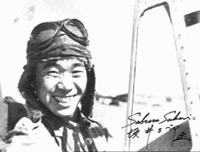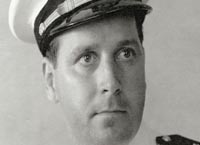Chivalry VII [End].

This is coolbert:
So, why all this interest in chivlary as presented in the previous blog entries??
My interest was stimulated by the web site of the PBS series "Secrets of the Dead".
Had an episode of an aerial combat over Guadalcanal in World War Two [WW2].
An aerial combat between a very matched group of Japanese and American combat fighter pilots. A combat for control of the air over Guadalcanal. A combat in the air that accompanied the combat also occurring on the ground. Vital combat for both sides. A turning point in the Pacific threatre of war during WW2.
This "dogfight" between the American and Japanese pilots resembles to me, the Combat of the Thirty. You cannot get, in modern warfare, much closer than this. Pilots, alone in a fighter plane, trying to out maneuver and shoot down other pilots that are trying to do the same to them. Generally speaking, matched aircraft with matched pilots in one-on-one combat of the type NOT usually seen in modern warfare.
What is most amazing is that both of the ace pilots, Southerland for the American side and Sakai on the Japanese side, apparently REFUSED [???] to kill one another?? Exhibited the highest form of chivalry on the battlefield by NOT killing the opponent, who was deemed very worthy and NOT deserving of death!!

This all seems far fetched, doesn't it. Southerland did not [??] offer a cogent reason why he did not "kill" Sakai when he had the drop on him [could not fire and was out of ammo was Southerland's rationale as he saw it]. Sakai, seeing the American pilot wounded, and realizing that "something" dramatic had happened, relates shooting at the Wildcat aircraft piloted by Sutherland, BUT ONLY TO DISABLE THE ENGINE AND ALLOW SOUTHERLAND TO PARACHUTE TO SAFETY!!!
"Why had Southerland failed to fire when he gained a brief advantage over Sakai? And had Sakai, an ace who finished the war with 64 kills to his credit, really aimed at Southerland's engine to give him a chance to bail out?"
[Sakai was the Imperial Navy's third-ranking ace and Japan's leading fighter pilot to survive the war.
!!]
OH, this sounds too good to be true, doesn't it??!! Sounds almost like something Saladin would have done almost one thousand years earlier!!
This "Secrets of the Dead" episode does not arrive at any definitive conclusion. From reading the article, it is apparent THAT SOMETHING VERY CHIVALROUS DID OCCUR IN THE SKIES OVER GUADALCANAL!! Something that to us moderns does not seem to EVER OCCUR in warfare as it is fought today.
[and quite often very rarely in medieval warfare for that matter either??!!]
Dig this about Sakai too. Seems to lend a lot of credence that he did only intend to shoot Southerland down, BUT NOT KILL HIM!!
"Early in 1942, Sakai was transferred to Tarakan in Borneo . . . The Japanese high command had instructed fighter patrols to down any and all enemy aircraft encountered, whether they were armed or not. On a patrol . . . Sakai encountered a civilian Dutch DC-4 flying at low altitude over dense jungle. Sakai initially assumed it was transporting important people, so he signaled to its pilot to follow him, but the pilot did not obey. Sakai came down and got much closer to the DC-4. He spotted a blonde woman and a young child through the window, along with other passengers . . . He decided, against orders, not to shoot down the Dutch aircraft and flew ahead of the pilot and signaled him to go ahead."
The question is also asked in my mind. HAS THERE BEEN OTHER INSTANCES OF CHIVALRY ON THE BATTLEFIELD IN MODERN WARFARE??
Apparently, very few! But not totally absent.
The great military historian J.F.C. Fuller has called the Boer War of 1899-1900 as the last "Gentleman's War". Primarily because of the chivalrous behavior of the Boer [Afrikaans speaking] Commando toward wounded and captured English soldiers. Particularly on the part of the Boer Commando leader Koos de la Rey.
"De la Rey was deeply religious and a small pocket Bible was rarely out of his hand."
[some might object that the Boer War WAS NOT a modern war. I would agree and disagree both. Had the characteristics of both pre-modern and modern warfare as we understand it!!]
Combat pilots of World War One [WW1] DID see themselves as gallant young men following in the footsteps of the knights of old. DID WANT to comport themselves in a chivalrous manner to the greatest extent possible.
"This show of chivalry was not uncommon, for in the beginning of the war [WW1], it was tradition to throw down a wreath if an enemy plane was shot down, to show respect and honor [fancy that nowadays!!]."
[there is a scene in the WW1 movie the "Blue Max" where George Peppard, rather than shoot down a foe, forces a British pilot to land at a German air field, much to the cheers of his German comrades. I think this sort of thing did occur in WW1?? Sparingly however, I would have to think!!]
[that combat pilots think this way is an indication that they quite often find themselves in a personal battle one-on-one with an enemy opponent in a manner that almost ALL other soldiers of the modern era do not!!]
During World War Two [WW2] WE DO find some other instances of chivalry as generally understood.
One instance of chivalry from WW2 is the "saving of the colors" as mentioned in a previous blog. The type of behavior on the battlefield that moderns think is passe' and so ancient as to be NOT done anymore. This particular incident of "saving of the colors" is of a Soviet officer wrapping his body with the unit colors to be saved from capture by the German invader.
As told by Suvorov:
"One most important element needed for the rebuilding of a new division is it's old colors. A fresh division can be set up very quickly around the old colors. But if the colors are lost - - that is the end of the division . . . Here is an example from the history of the 24th Samaro-Ulyanovsk Division "Iron" . . . it was active in the war against Germany from the very beginning of hostiltities . . . until as part of the 13th Army, it found itself encircled. Part of the divison managed to break out but it's colors were lost . . . A peasant, D.N. Tyapin, told the commission [a commission trying to locate hastily buried bodies of Soviet soldiers] how he had found the body of a Soviet officer, wrapped in a flag, and how he had buried the body, with the flag. The grave was immediately opened and the colors of the 24th Iron Division were found. The flag was immediately sent away for restoration and just as quickly, a new division was formed and given the old colors."
[saving the colors on the battlefield was considered to be the highest form of heroism in pre-modern warfare. Old habits die hard.]
I would include the "safe passage" guaranteed by the Luftwaffe in WW2 to a British bomber so it could parachute new artificial legs to the downed British ace Douglas Bader as an act of chivalry.
The various victories of the German surface raider Atlantis during WW2 were also the thing of chivalry. Clean warfare on the high seas. Captured and then sunk British ships had their crews taken prisoner, well treated by the German, and released where possible. The German Kapitän zur See Bernhard Rogge was held in high esteem by his own men and those Britishers that became his captives.
Anyone else can think of chivalrous behavior on the modern battlefield??
coolbert.
Labels: Chivalry

0 Comments:
Post a Comment
Subscribe to Post Comments [Atom]
<< Home